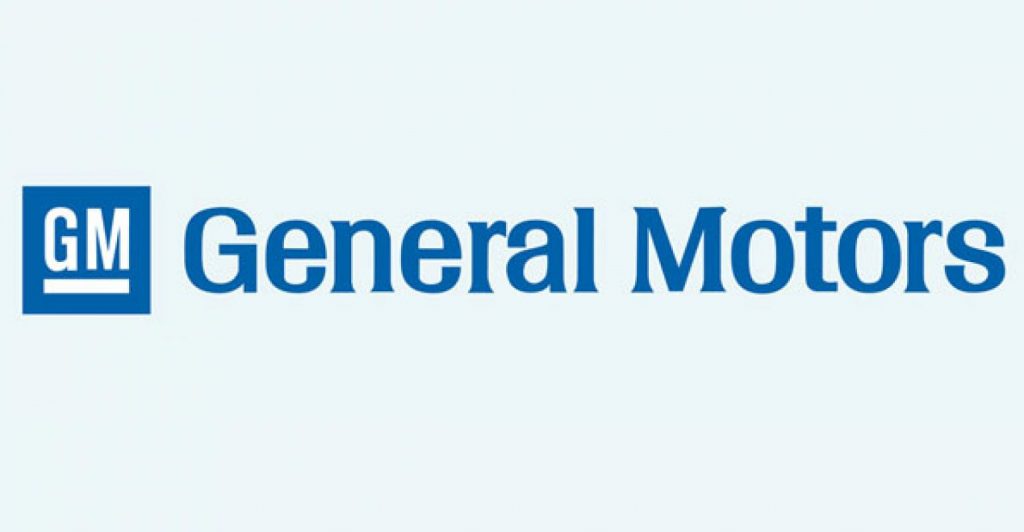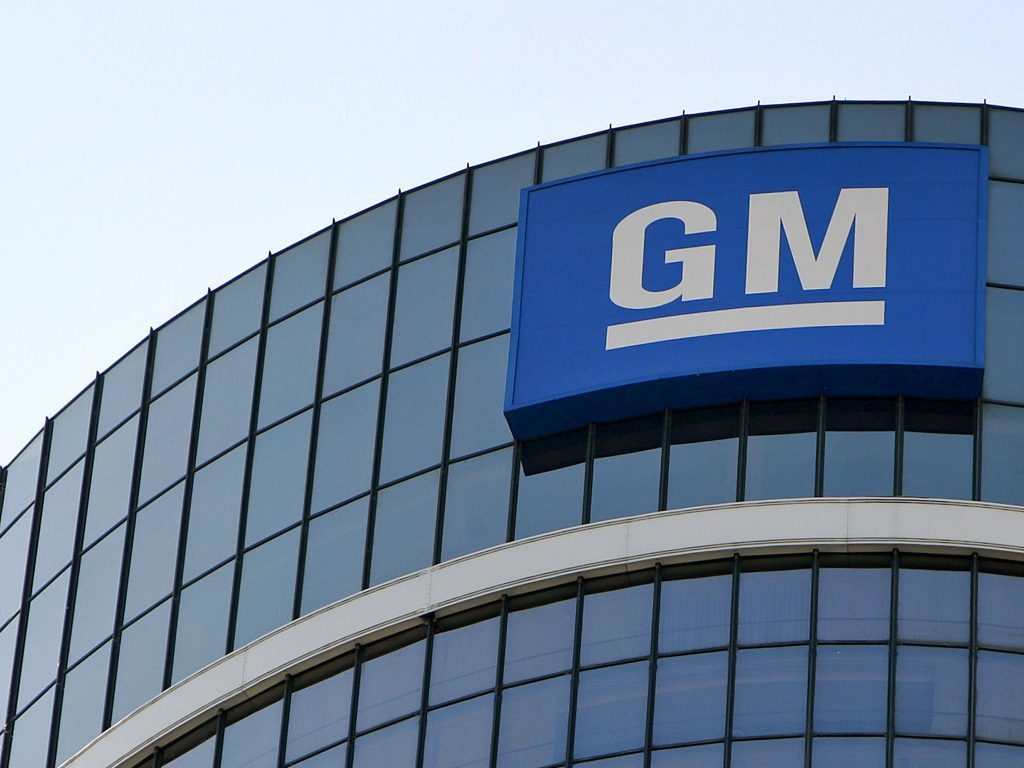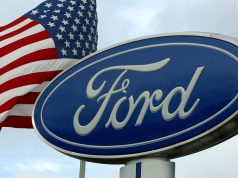This report provides the last five years revenues and revenue growth of General Motors Co (GM) from 2012 to 2016. General Motors generated a total of $166.4 billion revenues during 2016. General Motors reported a revenue growth of 9.2% year-over-year during 2016. The revenues and the revenue growth correspond to the fiscal year ending in December.
GENERAL MOTORS REVENUES FROM 2012 TO 2016
Here are the revenues and the revenue growth details of General Motors during the last five years:
- General Motors generated a total of $152.3 billion revenues during 2012. General Motors reported a revenue growth of 1.3% year-over-year during 2012.
- General Motors generated a total of $155.4 billion revenues during 2013. General Motors reported a revenue growth of 2.1% year-over-year during 2013.
- General Motors generated a total of $155.9 billion revenues during 2014. General Motors reported a revenue growth of 0.3% year-over-year during 2014.
- General Motors generated a total of $152.4 billion revenues during 2015. General Motors reported a revenue growth of -2.3% year-over-year during 2015.
- General Motors generated a total of $166.4 billion revenues during 2016. General Motors reported a revenue growth of 9.2% year-over-year during 2016.

WHY ANALYZE REVENUE GROWTH?
Revenue growth is the most commonly analyzed financial metric. Revenue Growth is the percent increase (or decrease) of a company’s revenue between two time periods. It is computed by using the following formula: ((revenues during the time period two – revenues during the time period one) / revenues during the time period one)*100. If the time periods are two consecutive years, then the revenue growth is referred to as the annual revenue growth year-over-year. If the time periods are two consecutive quarters, then the revenue growth is referred to as the quarterly revenue growth quarter-over-quarter. If the time periods refer to the same quarter in the two consecutive years, then the revenue growth is referred to as quarterly revenue growth year-over-year. In case the time periods are two non-consecutive years, then the revenue CAGR (Commutative Annual Growth Rate) is computed.
Revenue growth analysis is important for a number of reasons. First, it helps in understanding how a business is performing. If the revenue growth rates are positive, it means the business is performing well and the revenues are increasing. If the revenue growth rates are negative, it means the revenues are declining and the company needs to take measures to increase them. If they don’t, the company will continue to shrink. Second, a company’s historical revenue growth analysis along with the market size and market share analysis helps in forecasting the future revenues of a company. Third, a comparison of a company’s growth rates with its competitors helps in determining who is winning more business. A revenue growth higher than the industry average translates into increasing market share. Companies with very high revenue growth rates have the potential to be the industry disrupters.

GENERAL MOTORS RANKING
With $166.4 billion revenues, General Motors ranked number 8 in the R&P; Research list of top-3000 public companies in the US by revenues during 2016. Each one of the top-3000 companies generated more than $50 million of annual revenues during 2016.
The top-20 companies in the US by revenues during 2016 were:
- Walmart ($482.1 billion)
- ExxonMobil ($226.1 billion)
- Berkshire Hathaway ($223.6 billion)
- Apple ($215.6 billion)
- McKesson ($190.9 billion)
- UnitedHealth Group ($184.8 billion)
- CVS Health ($177.5 billion)
- General Motors ($166.4 billion)
- AT&T; ($163.8 billion)
- Ford Motor ($151.8 billion)
- AmerisourceBergen ($146.8 billion)
- Amazon ($136 billion)
- Verizon ($126 billion)
- General Electric ($123.7 billion)
- Cardinal Health ($121.5 billion)
- Costco ($118.7 billion)
- Walgreens Boots Alliance ($117.4 billion)
- Chevron ($114.5 billion)
- Kroger ($109.8 billion)
- Express Scripts Holding ($100.3 billion)
For the purpose of performance benchmarking of a company with a sector or industry average, R&P; Research associates every company with one sector and one industry. An industry consists of companies with related/similar business models. A sector comprises of a group of related/similar industries. For high-level analysis purposes, related/similar sectors are grouped into sector groups.

For example, Healthcare sector group is comprised of Life Sciences sector and Healthcare Services sector. Life Sciences sector is comprised of following industries: Pharmaceuticals; Medical Devices; Biotechnology; Diagnostics & Scientific Instruments. Healthcare Services sector is comprised of following industries: Medication Stores, PBM and Distributors; Healthcare Payers; Healthcare Providers; Medical Software; Healthcare Research Services.
General Motors is associated with Industrials Sector Group, Automobiles and Parts Sector, and Automobiles Industry.
With $166.4 billion revenues, General Motors ranked number 1 of all the companies in the US Industrials sector group. There were a total of 542 public companies in the US Industrials sector group that had revenues greater than $50 million during 2016.
The top-10 companies in the US Industrials sector group by revenues during 2016 were:
- General Motors ($166.4 billion)
- Ford Motor ($151.8 billion)
- General Electric ($123.7 billion)
- Boeing ($94.6 billion)
- UPS ($60.9 billion)
- United Technologies ($57.2 billion)
- Fedex ($50.4 billion)
- Lockheed Martin ($47.2 billion)
- Honeywell International ($39.3 billion)
- Caterpillar ($38.5 billion)
Industrials sector group is comprised of the following sectors: Aerospace and Defense; Automobiles and Parts; Construction and Building Products; Industrial Goods & Services; Industrial Support Services; Transportation & Logistics.

With $166.4 billion revenues, General Motors ranked number 1 of all the companies in the US Automobiles and Parts sector. There were a total of 56 public companies in the US Automobiles and Parts sector that had revenues greater than $50 million during 2016.
The top-10 companies in the US Automobiles and Parts sector by revenues during 2016 were:
- General Motors ($166.4 billion)
- Ford Motor ($151.8 billion)
- Lear ($18.6 billion)
- PACCAR ($17 billion)
- Adient ($16.8 billion)
- Delphi Automotive ($16.7 billion)
- Genuine Parts ($15.3 billion)
- Goodyear Tire & Rubber ($15.2 billion)
- AutoZone ($10.6 billion)
- Autoliv ($10.1 billion)
Automobiles and Parts sector is comprised of the following industries: Automobiles; Auto Parts. The definitions for each of the industries is as follows:
- Automobiles industry includes manufacturers of passenger vehicle that includes Cars, SUVs etc. and recreational vehicles including motorcycles like Harley Davidson. Companies making boats and other recreational vehicles are also part of Automobiles industry.
- Auto Parts industry includes manufacturers and distributors of automobile parts including engines, batteries and also tires.

With $166.4 billion revenues, General Motors ranked number 1 of all the companies in the US Automobiles industry. There were a total of 18 public companies in the US Automobiles industry that had revenues greater than $50 million during 2016.
The top-10 companies in the US Automobiles industry by revenues during 2016 were:
- General Motors ($166.4 billion)
- Ford Motor ($151.8 billion)
- PACCAR ($17 billion)
- Navistar International ($8.1 billion)
- Tesla Motors ($7 billion)
- Oshkosh ($6.3 billion)
- Harley-Davidson ($6 billion)
- Thor Industries ($4.6 billion)
- Polaris Industries ($4.5 billion)
- Brunswick ($4.5 billion)
COMPANIES SEGMENTATION
To identify and analyze high/low growth or most/least profitable similar-size companies in different sectors or industries, R&P; research classifies all companies into different segments based upon their revenues, revenue growth, and net profit margins.
Based upon their annual revenues, the companies are classified into one of the following four segments:
- Mega companies, having revenues greater than $50 billion.
- Very Large companies, having revenues between $10 billion and $50 billion.
- Large companies, having revenues between $1 billion and $10 billion.
- Mid-size companies, having revenues between $50 million and $1 billion.

With $166.4 billion revenues, General Motors was in the Mega companies revenue segment during 2016. There were a total of 54 companies in the Mega companies revenue segment during 2016.
Based upon their annual revenue growth, the companies are classified into one of the following eight segments:
- Very High positive growth companies, having annual revenue growth greater than 50%.
- High positive growth companies, having annual revenue growth between 20% and 50%.
- Medium positive growth companies, having annual revenue growth between 5% and 20%.
- Low positive growth companies, having annual revenue growth between 0% and 5%.
- Low negative growth companies, having annual revenue growth between -5% and 0%.
- Medium negative growth companies, having annual revenue growth between -20% and -5%.
- High negative growth companies, having annual revenue growth between -50% and -20%.
- Very High negative growth companies, having annual revenue growth less than -50%.
With 9.2% revenue growth year-over-year, General Motors was in the Medium positive revenue growth segment during 2016. There were a total of 876 companies in the Medium positive revenue growth segment during 2016. Of the US top-3000 companies, 1985 (nearly two-third of the total) had positive revenue growth and 1015 (nearly one-third of the total) had negative revenue growth during 2016.
Based upon their annual net profit margin, the companies are classified into one of the following eight segments:
- Very High positive margin companies, having net profit margin greater than 50%.
- High positive margin companies, having net profit margin between 20% and 50%.
- Medium positive margin companies, having net profit margin between 5% and 20%.
- Low positive margin companies, having net profit margin between 0% and 5%.
- Low negative margin companies, having net profit margin between -5% and 0%.
- Medium negative margin companies, having net profit margin between -20% and -5%.
- High negative margin companies, having net profit margin between -50% and -20%.
- Very High negative margin companies, having net profit margin less than -50%.
With a net margin of 5.7%, General Motors was in the Medium positive net profit margin segment during 2016. There were a total of 1086 companies in the Medium positive net profit margin segment during 2016. Of the US top-3000 companies, 2244 (nearly three-fourth of the total) had positive net profit margin and 756 (nearly one-fourth of the total) had negative net profit margin during 2016.

COMPANY BUSINESS SUMMARY
General Motors Company designs, builds, and sells cars, trucks, crossovers, and automobile parts worldwide. The company operates through GM North America, GM Europe, GM International Operations, GM South America, and GM Financial segments. It markets its vehicles primarily under the Buick, Cadillac, Chevrolet, GMC, Holden, Opel, Vauxhall, Baojun, Jiefang, and Wuling brand names. The company also sells cars, trucks, and crossovers to dealers for consumer retail sales, as well as to fleet customers, including daily rental car companies, commercial fleet customers, leasing companies, and governments. In addition, it offers connected safety, security and mobility solutions, and information technology services. The company, through its subsidiary, General Motors Financial Company, Inc., provides automotive financing services. General Motors Company was founded in 1897 and is based in Detroit, Michigan.

DATA SOURCE
The chart and the data on this page are sourced from the R&P; Research Industry Intelligence Platform. The platform provides the key financial metrics for all the public companies in the United States. The platform empowers users to compare last five or 15 years financial data of a company with the other companies or the industry averages. This benchmarking exercise yields powerful insights that can drive better business decisions.
INDUSTRY PEERS AND COMPETITORS OF GENERAL MOTORS
Ford Motor (F) Business Analysis – Analyze Historical Performance, Strategic Priorities,…
Ford Motor Co with $152 billion revenues in the year 2016 was the number 2 Automobiles company. Read this report to know the top competitors of Ford Motor and identify growth and cost optimization opportunities of Ford Motor
PACCAR (PCAR) Business Analysis – Analyze Historical Performance, Strategic Priorities, And…
PACCAR Inc with $17 billion revenues in the year 2016 was the number 3 Automobiles company. Read this report to know the top competitors of PACCAR and identify growth and cost optimization opportunities of PACCAR
Navistar International (NAV) Business Analysis – Analyze Historical Performance, Strategic Priorities,…
Navistar International Corp with $8 billion revenues in the year 2016 was the number 4 Automobiles company. Read this report to know the top competitors of Navistar International and identify growth and cost optimization opportunities of Navistar International
Tesla Motors (TSLA) Business Analysis – Analyze Historical Performance, Strategic Priorities,…
Tesla Motors Inc with $7 billion revenues in the year 2016 was the number 5 Automobiles company. Read this report to know the top competitors of Tesla Motors and identify growth and cost optimization opportunities of Tesla Motors
Oshkosh (OSK) Business Analysis – Analyze Historical Performance, Strategic Priorities, And…
Oshkosh Corp with $6 billion revenues in the year 2016 was the number 6 Automobiles company. Read this report to know the top competitors of Oshkosh and identify growth and cost optimization opportunities of Oshkosh
Harley-Davidson (HOG) Business Analysis – Analyze Historical Performance, Strategic Priorities, And…
Harley-Davidson Inc with $6 billion revenues in the year 2016 was the number 7 Automobiles company. Read this report to know the top competitors of Harley-Davidson and identify growth and cost optimization opportunities of Harley-Davidson
REVENUES ANALYSIS
General Motors (GM) Revenues And Revenue Growth From 2012 To 2016
This report provides the last five years revenues and revenue growth of General Motors Co (GM) from 2012 to 2016. General Motors generated a total of $166.4 billion revenues during 2016. General Motors reported a revenue growth of 9.2% year-over-year during 2016. The revenues and the revenue growth correspond to the fiscal year ending in December.
General Motors (GM) Revenues And Revenue Growth From 2010 To 2016
This report provides the last seven years revenues and revenue growth of General Motors Co (GM) from 2010 to 2016. General Motors generated a total of $166.4 billion revenues during 2016. General Motors reported a revenue growth of 9.2% year-over-year during 2016. The revenues and the revenue growth correspond to the fiscal year ending in December.
General Motors (GM) Revenue Growth Comparison With Industry Growth From 2012…
This report provides a comparison of General Motors Co (GM) revenue growth with Automobiles industry growth during the last five years from 2012 to 2016. General Motors reported a revenue growth of 9.2% year-over-year during 2016. The Automobiles industry growth was 4.4% year-over-year during 2016. General Motors growth was faster than the industry during 2016.
PROFIT ANALYSIS
General Motors (GM) Net Profit And Net Margin From 2012 To…
This report provides the last five years net profit and net margin of General Motors Co (GM) from 2012 to 2016. General Motors reported a total net income of $9.4 billion during 2016. General Motors generated a total of $166.4 billion revenues during 2016. General Motors net profit margin was 5.7% during 2016. The net profit and the net profit margin correspond to the fiscal year ending in December.
General Motors (GM) Net Profit And Net Margin From 2010 To…
This report provides the last seven years net profit and net margin of General Motors Co (GM) from 2010 to 2016. General Motors reported a total net income of $9.4 billion during 2016. General Motors generated a total of $166.4 billion revenues during 2016. General Motors net profit margin was 5.7% during 2016. The net profit and the net profit margin correspond to the fiscal year ending in December.
General Motors (GM) Net Profit Margin Comparison With Industry From 2012…
This report provides a comparison of General Motors Co (GM) net profit margin with Automobiles industry net profit margin during the last five years from 2012 to 2016. General Motors reported a net profit margin of 5.7% during 2016. The Automobiles industry net profit margin was 4.1% during 2016. General Motors was more profitable than the industry during 2016.
COST EXPENSES ANALYSIS
General Motors (GM) Cost of Sales (COGS) Analysis From 2012 To…
This report provides the last five years cost of sales (COGS) analysis of General Motors Co (GM) from 2012 to 2016. General Motors spent a total of $145.1 billion on COGS during 2016. General Motors generated a total of $166.4 billion revenues during 2016. As a percentage of revenues, General Motors spent 87.2% of its total revenues on COGS during 2016. The cost of sales (COGS) numbers are for the fiscal year ending in December.
General Motors (GM) Research & Development (R&D) Spending Analysis 2016
R&D; spending analysis for General Motors is not available because either the company does not provide the data or we don’t have it.
General Motors (GM) Sales, Marketing, General & Administrative (SG&A) Spending Analysis…
This report provides the last five years sales, marketing, general & administrative (SG&A;) expenses of General Motors Co (GM) from 2012 to 2016. General Motors spent a total of $11.7 billion on sales, marketing, general, and administrative (SG&A;) activities during 2016. General Motors generated a total of $166.4 billion revenues during 2016. As a percentage of revenues, General Motors spent 7% of its total revenues on SG&A; activities during 2016. The SG&A; spending numbers are for the fiscal year ending in December.
WORKING CAPITAL ANALYSIS
General Motors (GM) Inventory Spending Analysis From 2012 To 2016
This report provides the last five years inventory spending analysis of General Motors Co (GM) from 2012 to 2016. General Motors invested a total of $13.8 billion on inventories during 2016. General Motors generated a total of $166.4 billion revenues during 2016. As a percentage of revenues, General Motors invested 8.3% of its total revenues on inventories during 2016. The inventory numbers are for the fiscal year ending in December.
General Motors (GM) Accounts Receivable (A/R) Analysis From 2012 To 2016
This report provides the last five years Accounts Receivable (A/R) analysis of General Motors Co (GM) from 2012 to 2016. General Motors invested a total of $52.4 billion on accounts receivable during 2016. General Motors generated a total of $166.4 billion revenues during 2016. As a percentage of revenues, General Motors invested 31.5% of its total revenues on accounts receivable during 2016. The accounts receivable numbers are for the fiscal year ending in December.
General Motors (GM) Accounts Payable (A/P) Analysis From 2012 To 2016
This report provides the last five years Accounts Payable (A/P) analysis of General Motors Co (GM) from 2012 to 2016. General Motors invested a total of $27 billion on accounts payable during 2016. General Motors generated a total of $166.4 billion revenues during 2016. As a percentage of revenues, General Motors invested 16.2% of its total revenues on accounts payable activities during 2016. The accounts payable numbers are for the fiscal year ending in December.
ASSET MANAGEMENT ANALYSIS
General Motors (GM) Property, Plant & Equipment (PP&E) Investment Analysis From…
This report provides the last five years property, plant & equipment (PP&E;) investment analysis of General Motors Co (GM) from 2012 to 2016. General Motors invested a total of $72.2 billion on property, plant & equipment (PP&E;) activities during 2016. General Motors generated a total of $166.4 billion revenues during 2016. As a percentage of revenues, General Motors invested 43.4% of its total revenues on PP&E; activities during 2016. The PP&E; investment numbers are for the fiscal year ending in December.
General Motors (GM) Intangible Assets Analysis From 2012 To 2016
This report provides the last five years Intangible assets analysis of General Motors Co (GM) from 2012 to 2016. General Motors invested a total of $6.3 billion on Intangible assets during 2016. General Motors generated a total of $166.4 billion revenues during 2016. As a percentage of revenues, General Motors invested 3.8% of its total revenues on intangible assets during 2016. The Intangible asset numbers are for the fiscal year ending in December.














